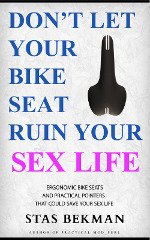3.6. What's the difference between the various enlarger types?
Description
This article is from the Darkroom
Work FAQ, by Cees de Groot
3.6. What's the difference between the various enlarger types?
There are two main types of enlargers: diffusion and condensor enlargers. The difference is in the type of light that hits the film: a diffusion enlarger has a light mixing chamber and/or a diffuse translucent panel in order to shed an evenly distributed, diffuse light onto the negative. A condensor enlarger uses one or more lens elements in order to produce a colliminated light beam focused on the negative.
You cannot say that one type is better than the other - a lot of photographers have taken foot in one camp and defend their type of enlarger in an almost religous way, but you will be able to produce good prints with both. There are some objective differences due to the nature of the light:
o The specular light from the condensor enlarger tends to enhance dust, etcetera, on the negative. You need to be more careful, but it's not a very big deal. A condensor enlarger also tends to show more grain in the print, but see the next point. On the other hand, the images are a bit sharper, which makes them especially popular for small formats like 35mm.
o The specular light also gives higher contrast. This is hard to explain in just a few words, but it's a well-known effect discovered by a Mr. Callier in the early days of this century: specular light gives higher density readings than diffuse light, and the ratio between these density readings is called the Callier Coefficient. I won't go into the details, but it means you need to shorten your development times in order to correct for this effect. Shorter development gives smaller grains and this offsets the higher grain from the previous point.
o Again due to the Callier effect, you will have a difference in contrast between contact prints and enlarged prints with a condensor enlarger: contact prints always show the diffuse densities in your negative, condensor enlarged prints show the higher specular densities. If you make a contact sheet, you will usually need a higher paper grade for this contact sheet in order to see the effect you'll get when enlarging the negatives. This is not a very big deal - you can match paper grades quite easily (it's normally one grade difference), and for good prints the grade indicated by a contact print is just a starting point, anyway (Ansel Adams used a very soft grade for his contact sheets in order to get maximal information, thus completely bypassing this problem).
Continue to:

